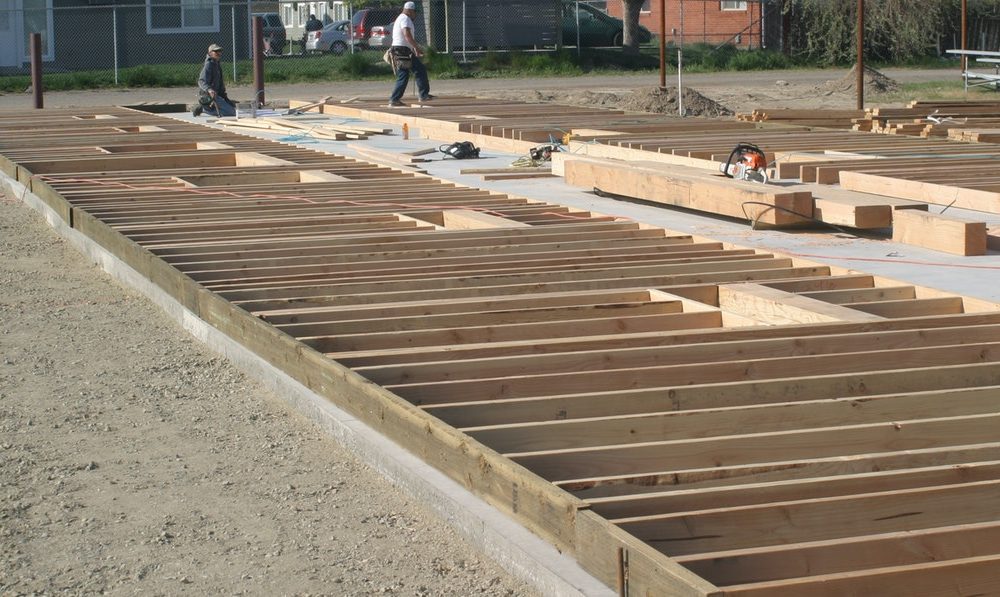
Creating more housing opportunities locally while easing regulations between Oregon and Idaho are two crucial goals for a local economic development board. (The Enterprise/File).
ONTARIO – The numbers tell a bleak story for Ontario real estate agent Larry Wilson.
In 2014, Wilson said, 52 new homes went up in Payette County. That same year in Malheur County, 22 new homes were framed.
The following year, builders put up 69 homes in Payette County and just 25 in Malheur County.
Over the next two years, Wilson said, the trend continued.
“Payette County has 410 square miles. Malheur County is 9,000 square miles. All that room and we have declining growth, numbers and declining (home) sales.”
Wilson, who is also a Malheur County commissioner, is on the front lines of what many in eastern Oregon perceive to be a persistent disparity between growth in Idaho and Malheur County. Critics say Oregon state regulations hamper development.
Help may be on the way, though. That’s because the Eastern Oregon Border Economic Development Board will seek changes in state law to address the variations of land use rules between Idaho and Oregon at next year’s legislative session.
The board is tasked with sparking economic development on a 20-mile corridor along the border with Idaho that includes Malheur County. The local board consists of seven voting members.
For the past nine months, the board worked on ideas to strengthen the local economy its members hope will become law.
They want to simplify certification for high-skilled trades such as electricians, contractors and career and technical education teachers. They want money for broadband service in Malheur County.
And they want to open the door for more housing in farm country.
For a real estate agent like Wilson, the disparity in regulations means people choose to live, build and invest in Idaho because land is more accessible.
“They (Idaho) don’t have a statewide land use system. It is county by county. But we are hampered with this one-size-fits-all deal,” said Wilson.
The local rural land use issue traces its roots to Oregon Senate Bill 100, signed into law in 1973. The law formed the basis for Oregon’s land use planning. Intended to protect farmland in the Willamette Valley, many locally believe the law restrains growth in a sparsely populated area like Malheur County.
There is a lot of land in Malheur County but much of it is restricted to farm use. That means homes can’t be built on parcels of less than 80 acres.
Idaho does not have the same type of rules and many believe an effort to open up idle farmland to development locally will stimulate growth.
Shawna Peterson, board chair, said finding a way to develop land in the county for housing is a priority.
“We think there is a demand and a desire for land outside of city limits but not 80 acres,” said Peterson.
Wilson said any new blueprint the board develops would be welcome.
“It is just hard to get through our land use planning system very efficiently,” said Wilson.
Streamlining occupational licensing rules would help locally as well, said Peterson.
A good example, she said, is the successful countywide training of certified nursing assistants.
Administered by the Malheur Education Service District, the program trains high school students to become qualified CNAs by the time they graduate. Different requirements between Idaho and Oregon impede the program, Peterson said.
“To run the program in Idaho the instructor has to be an RN. In Oregon, the instructor has to be an RN with several years of experience in acute care and long-term care. We never want to compromise quality but I am not sure those qualities make that person a better instructor,” said Peterson.
Charlene Peiland, an instructor for the local CNA program, said certification differences between Idaho and Oregon are obvious.
“In Idaho, they even allow LPNs (licensed practical nurse) to teach the classes. Because we are so close to the (Idaho) border it doesn’t make sense to have such a difference in regulations,” said Peiland.
Easing certifications for CNA instructors would benefit the community, said Ken Hart, president of Saint Alphonsus Medical Center of Ontario.
“We have to have the teachers to teach those students. The need is huge,” said Hart.
Hart said Saint Alphonsus made its first hire from the local CNA program two years ago. He said he doesn’t believe merging qualification standards between in Oregon and Idaho would hurt the CNA program.
“You don’t see a difference in quality. It is an artificial barrier to having an instructor come in and teach,” said Hart.
Hart said he wants to hire local CNA students.
“I want to build that pipeline as big as possible. More teachers equate into us having more classes. We want to grow our own and giving that program more capacity would be a huge benefit,” said Hart.
Peterson said the five initiatives now are still preliminary.
“The end result will be bills that advance through the Legislature with our board supporting them and organizing the information and calling upon people in the border region to testify and trying to get them passed,” said Peterson.
Peterson said the board is working with the Office of Legislative Counsel to draft the legislation. Once the language of each bill is determined, the board will ask state Rep. Lynn Findley, R-Vale, to introduce them at the Legislature.
Peterson said the border board also coordinated with state Sen. Cliff Bentz, R-Ontario, House Speaker Tina Kotek, D-Portland and other state officials as it developed the five initiatives.
“Speaker Kotek was very supportive and wanted to hear our ideas and really gave some good insight,” said Peterson.
Peterson said all five initiatives are important for Malheur County.
“It’s been a heck of a lot of hard work. But we’ve stayed consistent with our mission and the foundational work this year has helped us move forward,” said Peterson.
Reporter Pat Caldwell: [email protected] or 541-473-3377.




